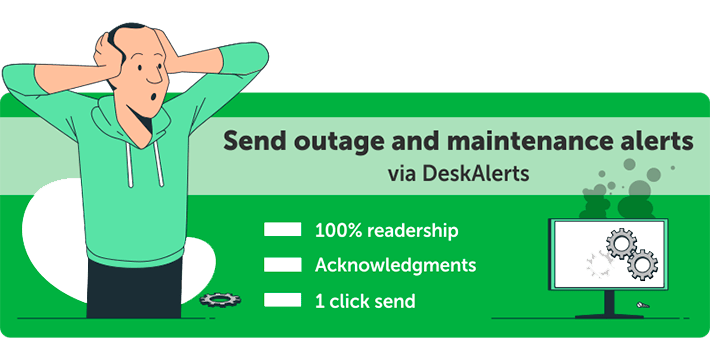 Companies need to be prepared for a range of scenarios that can eventuate where their business is disrupted in some way. These are known as “incidents” and can vary from IT outages to emergencies like fires or gas leaks, and everything in between.Some incidents are mildly inconvenient, while others can have a significant impact on the company’s operations. The latter, known as “major incidents, is when there is an incident that can have a high impact and affects most - if not all - of the company’s ability to carry out its operations.
Companies need to be prepared for a range of scenarios that can eventuate where their business is disrupted in some way. These are known as “incidents” and can vary from IT outages to emergencies like fires or gas leaks, and everything in between.Some incidents are mildly inconvenient, while others can have a significant impact on the company’s operations. The latter, known as “major incidents, is when there is an incident that can have a high impact and affects most - if not all - of the company’s ability to carry out its operations.
While a minor incident can cause mild inconvenience to employees, customers, and other stakeholders, a major incident can disrupt employees from being able to carry out their work at all, grind projects to a halt, and prevent customers from being able to buy anything.
In life, there are many things that happen beyond anyone’s control, while other incidents can be mitigated in other ways. However, being prepared to respond to these challenges should they occur can lead to better overall outcomes.

Why internal communication can help you get through an incident
When your company is experiencing an incident, you can get through it better by having proper procedures in place, including an effective incident communications plan. This can serve as a road map to assist your company in managing the situation.
Don’t wait for an incident to take place to begin planning: begin planning now. Having communication protocols established well in advance will save you time during an actual incident and will ensure you are prepared to manage the incident when it occurs.
Communicating with employees in the event of any incident is important to:
- Minimize disruption
- Stop the spread of misinformation among employees
- Ensure that employees have accurate information about the situation when communicating with customers and stakeholders
- Provide advice on what steps to take to keep the company running
- Protect your revenue and reputation.
Incident communications best practices
Incident communications best practices include:
1. Having a communication plan for incident response in place
Without a plan, you will just be making it up as you go. Many businesses don’t have a communication plan for incident management and discover this the hard way.
Your plan should outline how you will communicate with your employees if there is an incident that needs their attention. This should include the delivery channels, the frequency of communications, and who will be responsible for carrying out the plan.

2. Use incident communications software
The best way to reach employees to let them know about any type of incident - minor or major - is with purpose-built software that can provide information to everyone quickly, in real time.
Communication channels such as email and intranet are not reliable ways to inform employees - people simply don’t pay attention to every email they get or don’t actively seek out updates on the intranet. Critical communications software can send incident notifications to staff on computers, phones, and tablets to ensure they are kept informed.
3. Determine other communication channels
In addition to using incident communications software, you should determine other methods you may need to communicate with employees, for example, SMS, phone calls, or landlines. It’s important to have backup incident management communications options.
4. Share accurate, easy-to-understand information
It’s important that you give people the facts that they need to know (don’t include irrelevant information) and ensure that what you are telling them is easy to understand, written in plain language. This is especially important if the incident is an IT issue - assume most people won’t understand highly technical explanations of what is happening.
5. Communicate regularly, but don’t overdo it
Striking the right balance between not giving employees enough information, and saturating them with way too much information, can be tricky. When you have an incident that is ongoing, you should endeavor to keep your employees informed as the situation changes. So, for example, if you have a system outage, you can give them an estimated time of restoration.
6. Prepare templates in advance
Save time and don’t “reinvent the wheel” every time there’s an incident in your company by preparing incident communication templates that are mostly prepopulated with relevant information that you can send when you need to.
>> Get 9 Most Useful IT Outage Message Templates<<
7. Be transparent in your communications
Particularly if there is a major incident, it’s important that you are transparent in all of your communications with both internal and external audiences. If the company has made a mistake, you need to own it. If there’s a problem with your products and services, if you’ve been hacked, if you can’t fulfill contractual obligations, the worst thing you can do is try to “spin” it and lie about it. You’ll damage your relationships with your staff and your customers, and tarnish your reputation with the public otherwise.
8. Send communications to the right audiences
There are many different types of incidents that could occur. Sending mass communications to all of your employees may be appropriate in some circumstances - for example, if the entire company’s email servers are down. Other times, you may only need to communicate with custom audiences.
For example, if there is a problem with smoke detectors in your Atlanta office, staff in your Paris office will be annoyed if they’re getting notifications about it. Similarly, if you have employees who use a custom software system to do their job, for example, the accounting department, the rest of the organization won’t want to hear if it is experiencing downtime.
Post-incident communication is important too
When the incident is resolved, you may need to continue communicating with employees to facilitate a return to normal business practices, mainly if the event has caused significant disruption.
This will usually form part of a business continuity plan. Keep communicating with employees about the important information they need to do their jobs well and keep them safe. This includes:
- Processes and procedures they need to follow
- Any updated policies as a result of the incident
- A reminder that incidents can happen at any time and to stay vigilant
- Who to contact if they find any issues with a return to normal business.
Whatever incident befalls your organization, it doesn’t have to be a complete disaster if you’re prepared and ready to handle it.
 Caroline Duncan
Caroline Duncan
 Companies need to be prepared for a range of scenarios that can eventuate where their business is disrupted in some way. These are known as “incidents” and can vary from
Companies need to be prepared for a range of scenarios that can eventuate where their business is disrupted in some way. These are known as “incidents” and can vary from 







